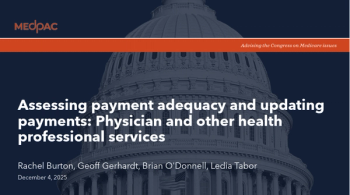
- March 25, 2019 edition
- Volume 96
- Issue 6
Improve patient billing experience for a better bottom line
To satisfy patients, make sure their billing experience is as good as the clinical care experience you provide.
No matter how good the quality of clinical care a physician offers, if the billing experience is bad for the patient, it can have a negative impact on a practice, says Joe Polaris, Senior Vice President of R1 RCM, a healthcare technology company based in Chicago, Ill.
“The revenue cycle management industry’s track record on patient experience over the long term is not good,” Polaris says. He says that patients often describes their billing experience as “a nightmare” because there isn’t enough price transparency up front, bills are not integrated across physicians and there aren’t always easy payment solutions.
“We’ve created this administrative burden historically for the patient navigating, accessing and paying for care,” Polaris says. “We really ought to invest in transforming the experience.”
The transformation he recommends is to catch up to other industries that have made customer experience seamless and simple. He uses the airline industry as an example. “You go in and there’s a [self-serve] kiosk everywhere. Or you can virtually do everything on your phone: book the flight, choose your seat, pay for the flight, get your mobile boarding pass.”
It’s on the revenue cycle management industry, he says, to automate and simplify everything from scheduling to billing. He says the goal should be to find a platform that is either built into an EHR or integrates wirelessly into one, that solves patients’ five main pain points.
“It’s not to say you have to do all five at once, but select a platform that can do more than what you’re looking to do today,” Polaris says. “Over time digital transformation is taking place in healthcare, and you’re going to want a platform that’s there for the patient regardless of their needs.”
Polaris says the most important pain points to solve are as follows:
Price transparency: Patients need to know up front what they can expect to pay out of pocket, through some sort of estimator that can help ascertain what portion insurance will cover, and what portion the patient will.
Personalized payment options: A crucial way to improving the customer’s billing experience is to personalize the patient’s experience based on their financial realities, Polaris says.
“With scoring models and big data, we can predict the difference between a patient who can get a bill and just pay versus a patient who may have a hardship and need us to proactively offer discounts, financial counseling or payment arrangements over time.”
He says physicians should think of their patients in three segments: A third of people who can pay their bills without any problem; a third of people who don’t like getting a bill but can make it work to pay it; and the third who struggle financially to pay for their medical care for a variety of reasons.
Insurance support: Physicians billing managers or teams should not rely upon patients to be fully up to speed on their own insurance coverage. He recommends software that can address insurance validation, check for prior authorizations and check medical necessities.
“All those checks ensure that we’re fool proofing the patient visit and making sure the provider’s going to get paid,” he says.
Polaris urges physicians to remember that, “There is not one platform that can do everything for the patient.” While there is a move toward better interoperability between systems, it’s up to the physician practice “to stitch together the platforms on the back end and create a seamless experience for the patient, either on the web, or on a mobile device,” he says.
Articles in this issue
over 5 years ago
6 ways to put your patient portal to better useover 6 years ago
Not sure what to do about long patient wait times?over 6 years ago
Recruiting and retaining young physiciansover 6 years ago
Hiring clinical staffover 6 years ago
Mastering revenue cycle managementover 6 years ago
Debt: How much is too much?over 6 years ago
To consult or not consultover 6 years ago
Get paid for using the patient portalNewsletter
Stay informed and empowered with Medical Economics enewsletter, delivering expert insights, financial strategies, practice management tips and technology trends — tailored for today’s physicians.















